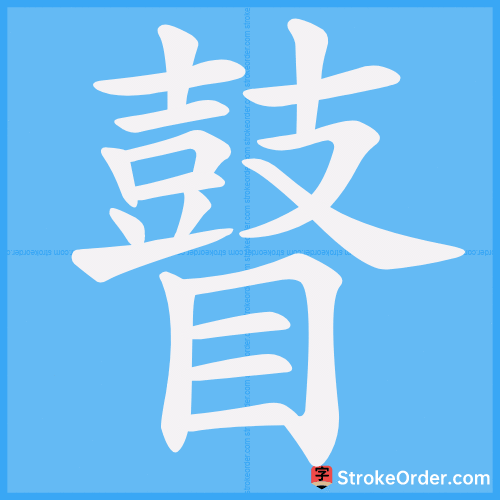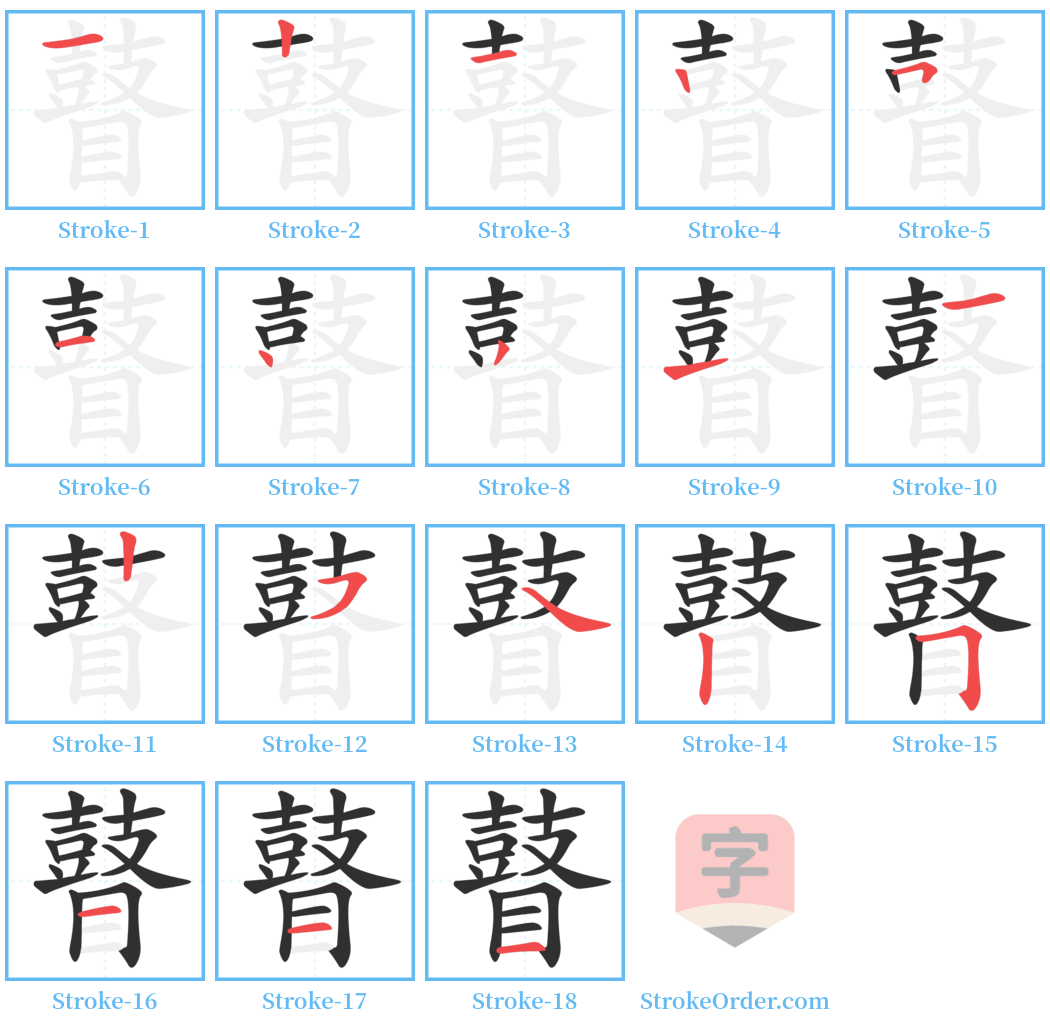瞽 Stroke Order
Animated Stroke Order of 瞽

Stroke Order Diagrams for 瞽

Step-by-Step Handwriting Guide for 瞽

Learn to Write Chinese Characters with Video Tutorials
Watch the video of writing the Chinese character "瞽", learn the correct stroke order (笔顺) of the character "瞽", and master the standard way of writing the character "瞽".
Free Printable Handwriting Practice with Stroke Order: 瞽
Printable Writing Practice Worksheet of "瞽" in Portrait Orientation (Tian Zi Ge)

Printable Writing Practice Worksheet of "瞽" in Landscape Orientation (Tian Zi Ge)

Information of 瞽
Pinyin
gǔ
Radical
目
Strokes
18 strokes
Usage
★★★★
Definition
blind
瞽 [gǔ]
1. Blind person; blind man.
Blind person, blind man: “Li Lou is said to be blind.”
2. Blind; lacking sight.
Blind: “The blind person.”
3. Ancient musician.
Ancient musician; in ancient times, blind people were made to serve as musicians, thus the term is a synonym for musical officials.
4. Lacking insight; ignorant; as in the phrase "discarding the old for the young is called 瞽."
Lacking understanding; ignorant of the world.
5. Stupid; lacking recognition.
Lacking recognition: "Though blind, still having eyes."
6. Drum; a musical instrument that is hollow and cylindrical, covered on both ends with skin, struck to produce sound.
7. Example uses:
A. 瞽目 (blind eyes; blind person)
B. 瞽者 (person who is blind)
C. 瞽旷 (referring to teachers who are blind)
D. 瞽目先生 (storyteller who is blind)
引:
1. "Shuo Wen": 瞽 means having eyes but lacking insight.
2. "Book of Documents, Yao Dian": The blind are referred to as 瞽.
3. "Xunzi, Jie Bi": The blind person looks up but cannot see the stars.
4. Ming dynasty, Liu Ji's "Words of the Orange Seller": To deceive the ignorant and blind.
Example uses of ignorance:
A. 瞽说 (foolish talk).
B. 瞽言 (foolish words).
Derived from:
- 短视 (short-sighted).
- 目 but without sight.
Additional ancient references:
1. "Book of Rites": A blind person playing the drum; common man running away.
2. "Zhuangzi, Xioa Yao You": The blind cannot share in observing the standard of literature.
Input Method for 瞽
Pinyin
gu3
Wubi
fkuh
Cangjie
gebu
Zhengma
bjxl
Four Corner
44604
Unicode
U+77bd
Same Pronunciation Characters